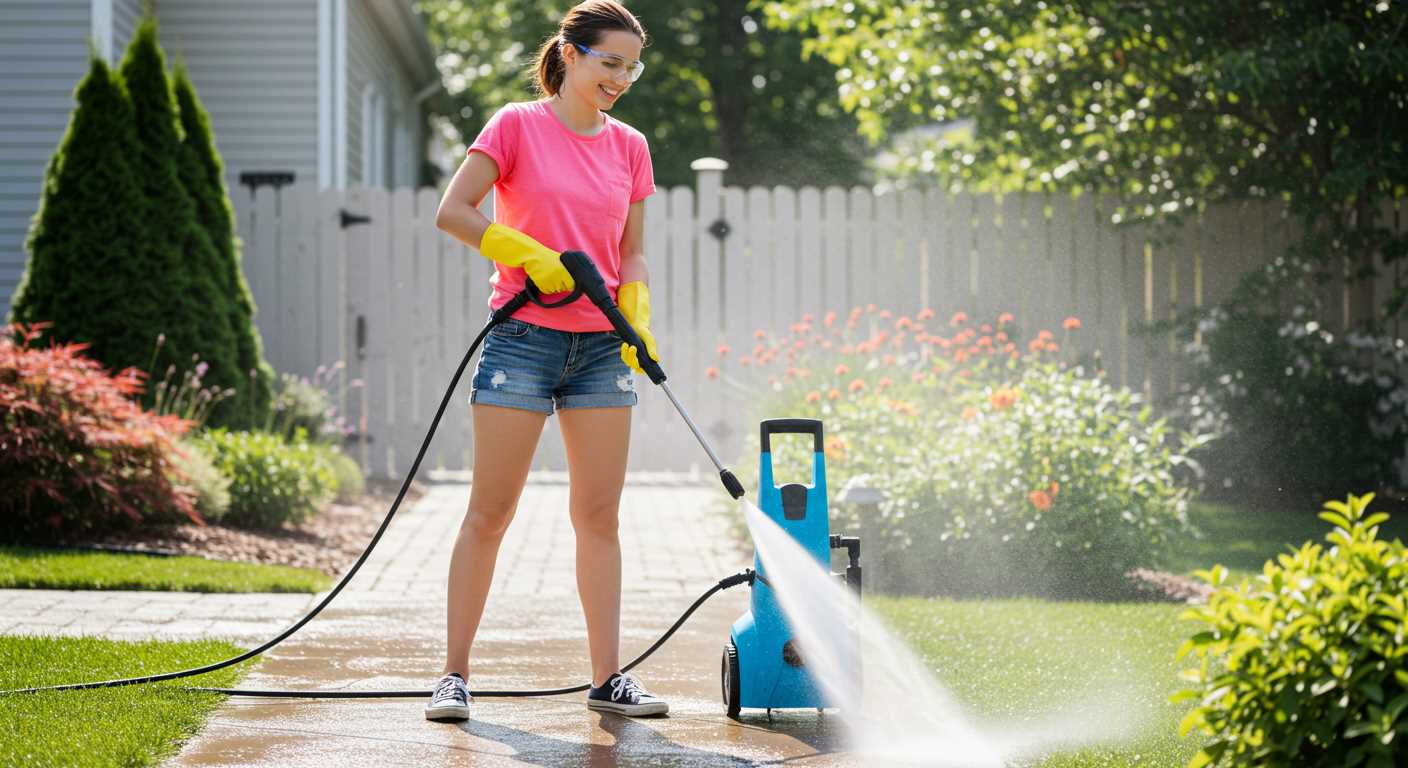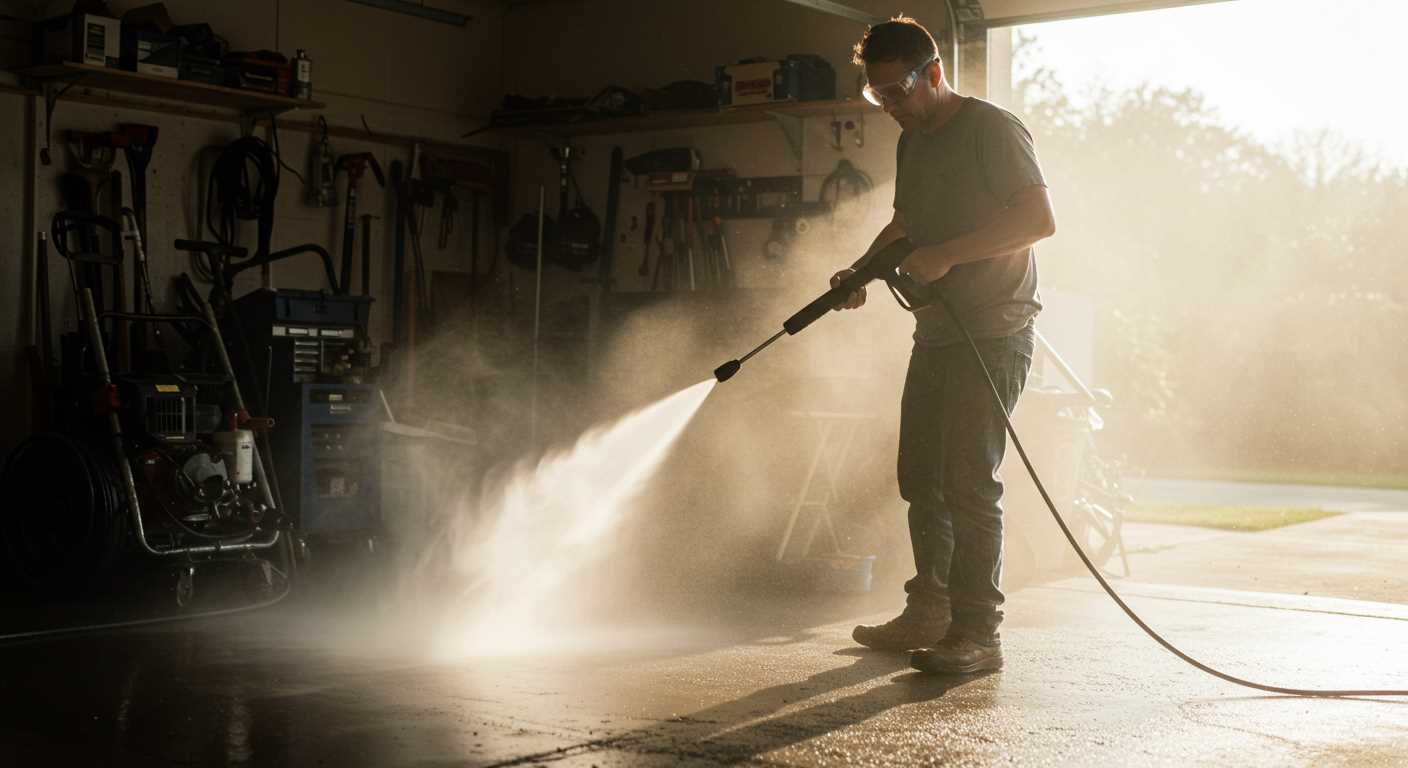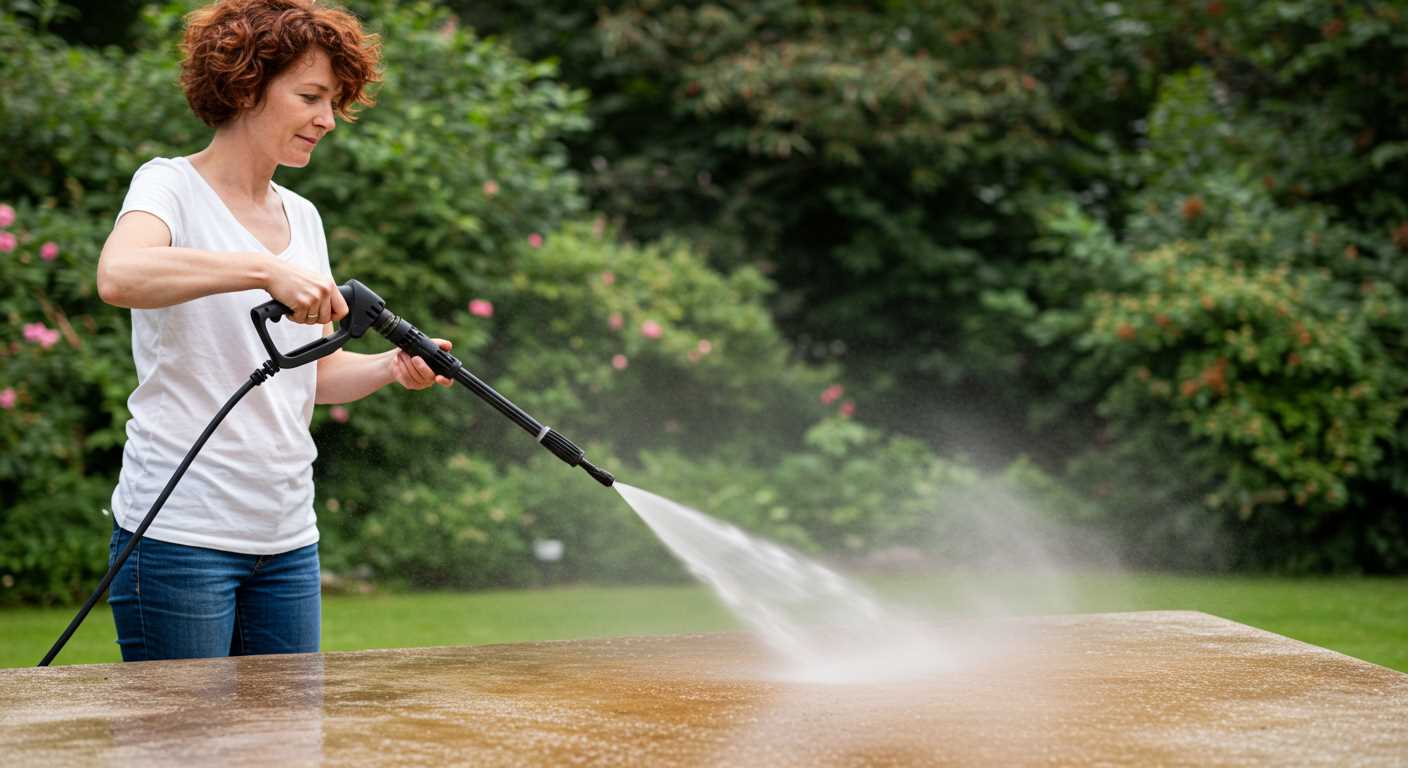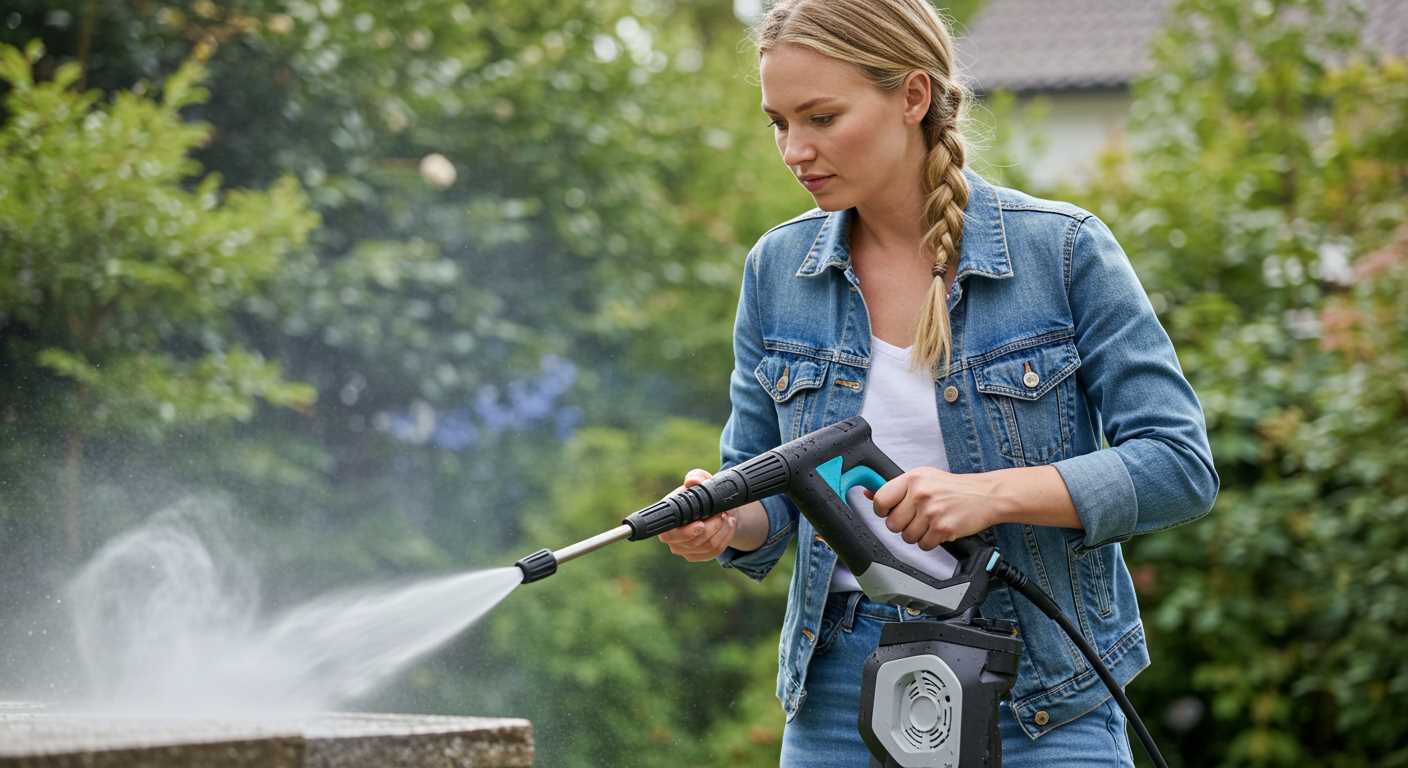The first step in selecting the best cleaning apparatus is to evaluate the PSI (pounds per square inch) rating. I recommend models ranging from 1500 to 3000 PSI for most home tasks, making them versatile for a variety of surfaces. For more heavy-duty applications, consider machines that exceed 3000 PSI, ensuring they can tackle stubborn grime and oil.
Next, water flow rate, measured in GPM (gallons per minute), is crucial. Opt for units with at least 1.5 GPM; this will enhance cleaning efficiency, allowing for quicker job completion. Higher flow rates correlate with better cleaning performance, especially on larger areas.
Electric versus gas-powered devices is another significant factor. Electric options are generally lighter and easier to handle, ideal for residential cleaning tasks. However, gas-powered alternatives provide superior power and mobility for more extensive or commercial applications. Each has its place, depending on the user’s needs.
Don’t overlook the importance of accessories and attachments. Nozzles that adjust spray patterns can greatly increase versatility; a rotating nozzle can offer enhanced cleaning power on tough surfaces. Additionally, detergent tanks and surface cleaners contribute to more effective and efficient cleaning sessions.
Lastly, always consider the manufacturer’s warranty and customer support services, which can be indicators of product reliability. A longer warranty often suggests the manufacturer’s confidence in their product.
Evaluating Cleaning Devices
Focus on the specifications that matter most to your cleaning requirements. Look closely at the flow rate, measured in litres per minute (LPM), as this affects the efficiency and speed of cleaning. A higher flow rate typically results in quicker cleaning without compromising on power.
Determine the pressure, gauged in bars or PSI (pounds per square inch), which indicates the force with which water is expelled. This factor is crucial for different tasks; for instance, light-duty jobs may require around 1000-1500 PSI, while heavy-duty cleaning might need 3000 PSI or above.
Take note of the motor type. Electric models are quieter and suitable for residential tasks, while gas-powered variants offer portability and more power, ideal for extensive or demanding jobs. Battery-operated options can provide flexibility but may have limitations in run time and pressure.
Assess additional features such as adjustable nozzles, which enhance versatility, or built-in detergent tanks, simplifying the cleaning process by mixing soap and water. Compatibility with various attachments can also expand functionality for specific tasks.
Pay attention to ergonomics and design as well. A lightweight machine with a comfortable handle can ease operation, especially during extended use. Also, consider the length of the hose and power cord. Longer lengths offer greater reach without the need to frequently move the unit.
Don’t overlook customer reviews and professional evaluations. These insights can reveal how well a device performs in real-world scenarios, shedding light on any potential issues or highlights that specifications alone may not indicate.
Lastly, evaluate after-sales support from the manufacturer. Availability of parts and warranty terms can significantly influence long-term satisfaction and ease of maintenance.
Understanding Pressure Ratings and Their Importance
Focusing on the rating specifications can significantly impact your selection process. Generally, there are three types of ratings to consider: PSI (pounds per square inch), GPM (gallons per minute), and CU (cleaning units). Each plays a distinct role in determining the unit’s capability.
PSI (Pounds per Square Inch)
PSI measures the force of the water coming out of the nozzle. A higher PSI indicates a stronger push. For instance:
- 1,300 – 1,600 PSI: Great for light-duty tasks such as washing cars and patios.
- 1,600 – 2,400 PSI: Suitable for medium-duty applications like cleaning decks and driveways.
- 2,400 PSI and above: Designed for heavy-duty uses, including tackling stubborn stains on concrete or industrial surfaces.
GPM (Gallons per Minute)
GPM measures the volume of water being expelled. Higher GPM ratings correlate with quicker cleaning. For optimal efficiency, consider:
- 1.2 – 1.5 GPM: Adequate for small jobs.
- 1.5 – 2.5 GPM: Ideal for more extensive tasks; a balance between speed and power.
- 2.5 GPM and above: Best suited for professional applications requiring continuous use.
When evaluating a machine, take both PSI and GPM into account. A high PSI paired with a low GPM may not perform effectively for large cleaning tasks. Conversely, a low PSI with a high GPM can be effective for covering more area without much scrubbing. Prioritise your specific cleaning needs to choose the right combination.
Cleaning Units (CU)
Cleaning units are derived from the formula: CU = PSI x GPM. This metric provides an overall picture of cleaning capability. A unit with:
- 3,000 CU: Typically excellent for heavy-duty chores.
- 1,800 – 2,500 CU: Generally sufficient for everyday cleaning around the home.
In conclusion, understanding these ratings aids in making an informed decision, ensuring that the equipment chosen meets the demands of the intended tasks without incurring unnecessary expenditure or inefficiency.
Evaluating Flow Rate: How It Affects Cleaning Efficiency

When assessing cleaning devices, prioritise flow rate. It’s a pivotal metric that directly influences how effectively grime and stains are removed. Flow rate, measured in litres per minute (LPM), dictates the amount of water emitted, impacting both the washing process and the equipment’s performance.
Impact of Flow Rate on Cleaning Performance
A higher flow rate translates to more water being utilised during the cleaning task. This increased water volume enables quicker rinsing and flushing away of dirt. For example, if you’re tackling a large patio, devices offering 10 LPM can significantly decrease the time required compared to those providing only 5 LPM.
Moreover, the flow rate’s synergy with water pressure forms the backbone of effective cleaning. Balancing these factors ensures that grime is not only dislodged but also carried away efficiently. For persistent stains, devices that combine high flow rates with adequate pressure yield superior results, minimising the need for repeated efforts.
Choosing the Right Flow Rate for Your Needs
Selecting the appropriate flow rate hinges on your cleaning tasks. Residential tasks may require lower flow rates, while extensive commercial or industrial projects benefit from higher rates. It’s beneficial to evaluate the surface areas and types of contaminants you’ll be working with.
| Task Type | Recommended Flow Rate (LPM) |
|---|---|
| Car washing | 5 – 7 |
| Deck cleaning | 7 – 10 |
| Patio cleaning | 8 – 12 |
| Industrial cleaning | 10 – 15 |
In conclusion, understanding flow rate and its correlation with cleaning efficiency is vital for making informed choices. Equip yourself with this knowledge, and you’ll achieve better results while optimising water usage during cleaning. Choose wisely for the most effective cleaning experience.
Choosing the Right Nozzle Types for Different Tasks
For optimal results, selecting the appropriate nozzle is crucial for various cleaning tasks. Each nozzle type has distinct characteristics that cater to specific needs.
Turbo Nozzle
The turbo nozzle combines the power of a narrow spray pattern with a rotating action, effectively tackling tough grime and dirt. It’s ideal for surfaces like concrete or heavily soiled patios, where high intensity is required. Use this nozzle sparingly on delicate surfaces to avoid damage.
Variable Nozzle

A variable nozzle allows for adjusting the spray pattern from a wide fan to a concentrated jet. This versatility makes it suitable for a range of tasks, from washing cars to cleaning decks. Shift settings according to the surface and dirt level for best results.
Flat fan nozzles are designed for rinsing large areas quickly, while the soap nozzle facilitates the application of detergent. When using detergents, always follow the manufacturer’s guidelines to ensure compatibility and effectiveness.
Understanding these nozzle options significantly enhances your cleaning efficacy. Matching the right type to your specific task not only saves time but also protects the surfaces being cleaned, leading to superior results.
Gas vs Electric Washers: Key Differences
Choosing between gas and electric units hinges on specific needs. Here are crucial differences I’ve observed:
- Power Output: Gas engines typically deliver higher PSI ratings, ideal for tougher jobs like removing grime from driveways. Electric models are more suited for light to medium tasks, such as cleaning patio furniture.
- Mobility: Gas units offer greater portability, making them suitable for outdoor use far from power sources. Electric devices restrict usage to areas near an outlet, which can limit cleaning areas.
- Maintenance: Gas machines require regular maintenance, including oil changes and spark plug replacements. In contrast, electric options demand less upkeep, often needing only the occasional inspection of the power cord and nozzle.
- Noise Level: The operation of gas engines generates more noise, which can be disruptive in residential areas. Electric counterparts are quieter, making them friendlier for urban settings.
- Cost: Generally, electric models have a lower upfront cost and are less expensive to operate. However, gas units, while pricier, offer more power and versatility.
- Environmental Impact: Electric options produce no emissions during use, contributing to a cleaner environment. Gas models release exhaust and may not be ideal for eco-conscious consumers.
Reflecting on versatility, if I’m tackling heavy-duty cleaning, I reach for a gas machine. For everyday tasks, an electric model suffices. Selecting the right one boils down to weighing power needs against convenience and environmental considerations.
Assessing Weight and Portability for Your Needs

Consider the weight of the machine you intend to purchase. For frequent movement between locations, a model below 20 kg is manageable and allows for easy transportation. Weighing over 25 kg often translates to a hassle when manoeuvring around tight spaces.
Look for designs with integrated wheels and handles. These features significantly enhance mobility, particularly in larger outdoor areas. A user-friendly option will often include a retractable handle and well-placed wheels that can handle uneven terrain.
If you have a smaller space or intend to use the equipment on multi-storey buildings, choose a lighter unit that you can comfortably carry. Models designed for easy handling typically feature a compact build, making storage simpler and reducing the risk of damage when moving.
Think about the power source as well. Electric models often weigh less, making them suitable for home use, while gas-operated variants may deliver stronger cleaning but come with added weight. Evaluate what fits your cleaning tasks without compromising ease of use.
Lastly, assess your physical capabilities. Choose a device you can handle effectively without strain. Test it out, if possible, before making a final decision. Finding the right balance between functionality and portability will enhance your cleaning experience and make tasks less burdensome.
Reading User Reviews and Expert Opinions: What to Look For

Evaluate user ratings specifically regarding performance and reliability. High ratings in these areas often indicate satisfaction with the unit’s capabilities and durability over time. Pay attention to how users describe their cleaning experiences; detailed comments can reveal insights into efficiency beyond mere numbers. Look for mentions of how models perform on different surfaces, as this can affect your expectations for various tasks.
Identifying Common Complaints

Examine recurring issues highlighted in reviews. If multiple users report problems with a particular feature–like starting difficulties or pressure fluctuations–this may signal a potential flaw. Note any mentioned limitations that could affect your intended use, such as the need for power outlets or fuel availability for gas units.
Expert Analysis and Recommendations
While user feedback provides practical insights, expert evaluations can offer deeper technical knowledge. Seek out analyses from trusted sources in home maintenance or cleaning equipment. Experts may clarify specifications that influence decision-making, such as maintenance requirements and repair history. Reviews that compare different models can also guide you in selecting a format that aligns with your cleaning tasks.







